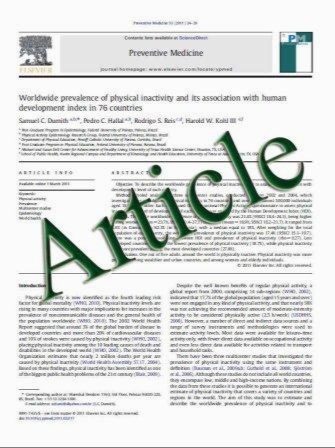Cardiac troponin T: an important predictor of late death and myocardial infarction following hip fracture: an eight-year prospective observational cohort study
- نوع فایل : کتاب
- زبان : انگلیسی
- مؤلف : Alexander Izhaki Yuri Slesarenko Mona Boaz Yaron Haimovich Yoseph Rozenman
- چاپ و سال / کشور: 2010
Description
Background Cardiac troponin is an accurate marker of minimal myocardial injury and has been shown to predict adverse outcomes in various non-acute coronary disease settings. Patients with hip fracture (HF), an osteoporotic, mostly octogenarian population, are prone to sustain myocardial injury through both peri-fracture stress and subsequent surgery (osteosynthesis or hemiarthroplasty). Objective To assess the frequency and magnitude of myocardial injury on admission and in-hospital (post-surgery) as measured by troponin T (TnT) and to evaluate the long-term prognostic value of TnT on cardiovascular morbidity and mortality. Methods TnT levels were measured on admission (ad- TnT) and during hospital stay in 148 patients with HF and followed them prospectively until December 27, 2009. Each patient’s highest TnT value was designated peak TnT. TnT[0.1 ng/ml levels were identified as elevated, using ROC analysis to predict death. Survival was assessed using Cox regression analysis. Results The study population was 81.3 ± 8.2 years of age, 32 men. Elevated adTnT and peak TnT were observed in 34 (22.9%) and 51 (34.4%) of patients, respectively. On December 27, 2009, 112 (75.7%) patients had died. After controlling for age, serum on-admission creatinine and CHF, adTnT emerged as a significant independent predictor of death (HR = 1.07, 1.02–1.12 95% CI P = 0.01). Late myocardial infarction (MI) observed in 13 patients at 1,314 ± 659 days was predicted by peak TnT (HR = 1.3, CI 1.06–1.57, P = 0.027). Conclusions Myocardial injury as evidenced by elevated TnT levels was observed in 1/3 of our patients with HF. TnT elevation, mostly observed on admission, reflected peri-fracture stress rather than surgery-related factors. Death and MI during the 8-year follow-up period were positively associated with magnitude of TnT levels during the 8-year follow-up period; Study contribution: We have demonstrated a continuous and graded association between increasing troponin levels on admission and risk of death. Previous studies have examined this association using a threshold effect. Additionally, the present study features a long follow-up time (8 years), suggesting that troponin levels on admission increase the risk of death over a prolonged period of time
Eur J Orthop Surg Traumatol (2011) 21:243–249 DOI 10.1007/s00590-010-0696-3 Received: 6 April 2010 / Accepted: 11 September 2010 / Published online: 8 October 2010


